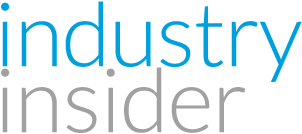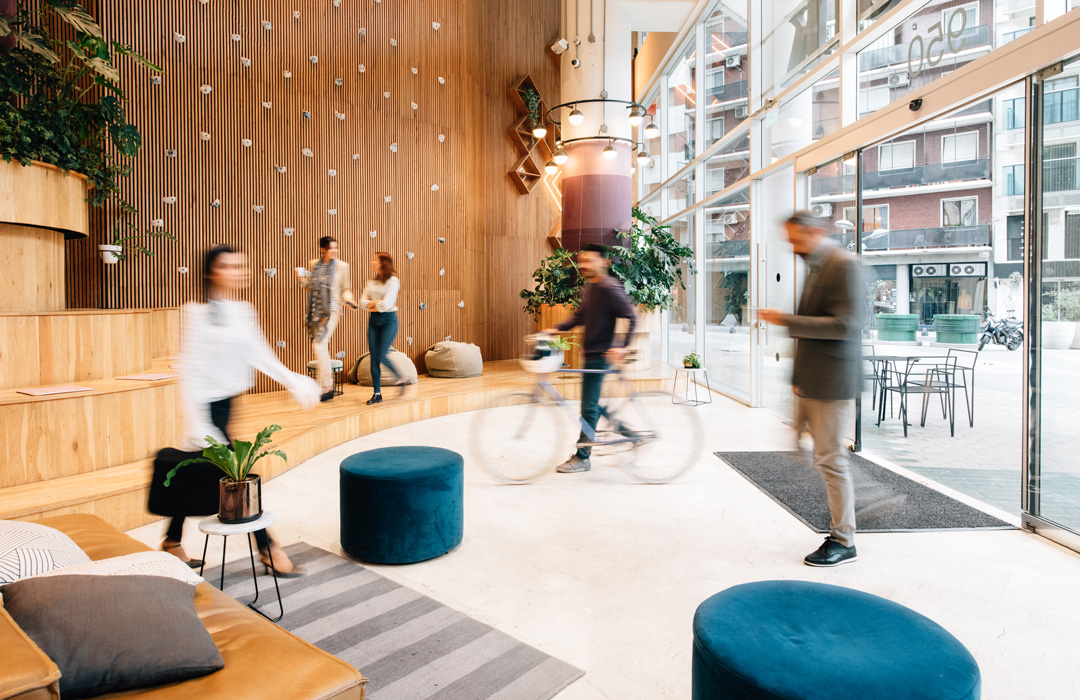A lot of change was promised post-COVID for the way we designed our homes and offices, but now, as the world ‘moves on’, are the predictions coming true?
In April 2021, Design Experience Series focused on urban design, examining what we need to do to improve the innovation, quality, and resilience of our communities. It was early days of the pandemic – much was said about the looming crisis, and potentially how it would change home and workplace design… Who’d have conceived that it would be more than two years before we were again able to get together in one room to discuss the topic again.
Now, as we ‘learn to live with’ the virus, and get back to the office after endless work-from-home orders, isolation, and lockdowns, are the fearful predictions for change still relevant? Are we heading for a new normal or the same old normal?
Industry Insider spoke to two of our industry expert and past Design Experience speakers to hear how design insights have changed in the past 24 months.
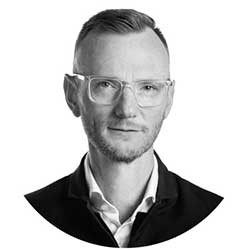
Ian Briggs, Director, Plus Architecture, has the pleasure of working across Australasia and can reflect on how design thinking is changing between Australia, New Zealand and the rest of the world, as the pace of recovery increases.
“Post-COVID is feeling very busy,” says Ian Briggs.
“In parts of Australia and especially Melbourne, 2018-19 was a pretty flat year for commercial development, whether it was apartments or office buildings or anything really, and so a lot of people were looking forward to 2020 being a recovery year…
“Here we are, roughly three years later, there’s a lot of catch up being played out, which is great,” he says.
But, Briggs says, things aren’t just returning to the ‘old normal’. Things have ‘step-changed’ changed and certain assumptions that were pretty rock-solid three years ago, are different to what is happening now.
“As an example, one of our projects was launched to the public last month – it’s a project in that demographic where people are empty-nesting, and they want to get out of their five-bedroom houses and move into a nice three-bedroom apartment.
“Afterwards, the main salesperson came up to me and said, pretty much all the boomers who were buying into the project were saying that they want induction cooking, they don’t want gas.
“That change – in an area that would’ve been considered to be absolutely rock solid, especially for more conservative older people – you would just not have seen that coming a few years ago so,” he said.
Briggs says some step-change is COVID-related and some is no doubt related to the series of unfortunate events happening in Ukraine, but it reflects the growing power of the individual to effect major change.
“Revolutions, whether it was industrial revolution or the computer information revolution – they’re always driven by the so-called, ‘big end of town’ – the people that were really going to benefit from that change.
“But all these step changes that occurred over last three years have been from grassroots up. If I decide I’m going to choose an induction hotplate over a gas hotplate, or, if I’m going to have a recharger next to my car space garage whether it’s at work or at home – that’s an individual value shift, but suddenly there’s an impact on power supply, on generators, on the infrastructure that the big end of a town likes to control.
“When lots of people change en masse, it has a huge impact,” he said.
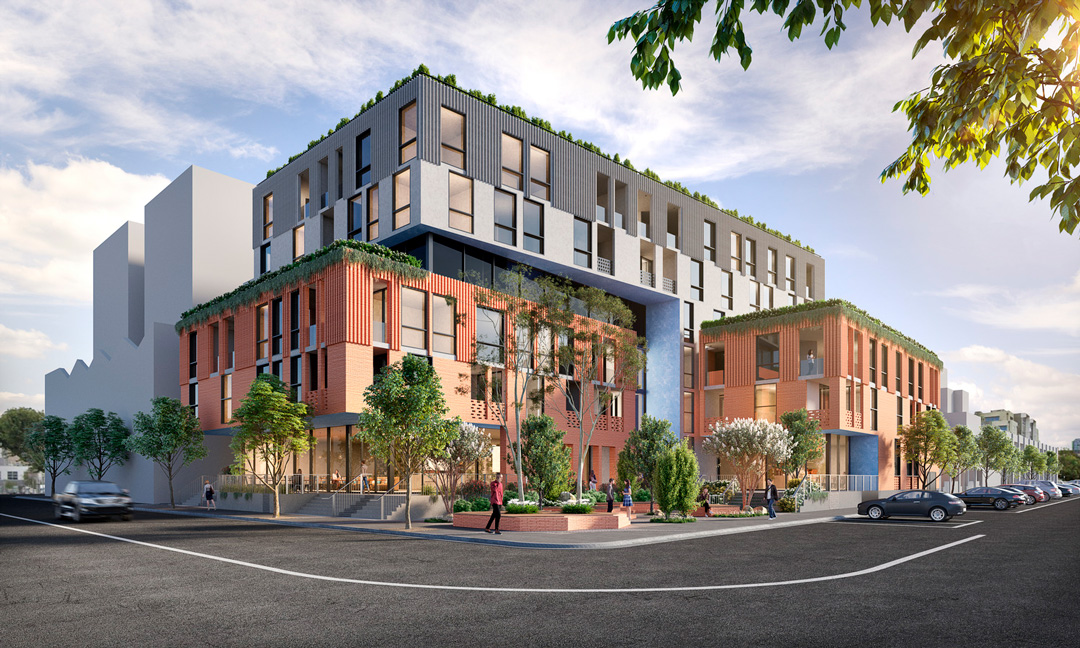
Reflecting back to the beginning of the Pandemic, architects talked about the need f
or more and better spacing in offices and work environments. Is that still on the table or have we decided that it’s not as essential going forward?
“People aren’t concerned about being in the office with their own colleagues,” says Briggs. “But there’s still a concern of ‘the other’ – the visitor.”
“So, the lift buttons are becoming automated, so you don’t need to touch stuff. If you go to the bathroom in any recently refurbished airport, there’s no more taps. It’s caught up to what you saw in Japan pre-COVID – everything’s controlled by the swipe card or whatever it might be. So, there’s no touchpoints anymore.”
Another prediction in the midst of the Pandemic was the need for improved filtration and ventilation in commercial buildings and workplaces. Briggs says that this trend is seeing a “massive push” now. First, in retrofitting and getting filtration to fit, but second, actually designing from scratch how that technology is incorporated with ESD (Environmentally Sustainable Design).
“You have ventilation which creates airflow through a building, but airflow is a challenge for heat retention or heat gain. So, you then have different systems to filter the heat gain in and out to stop buildings either overheating or not.
“If you look at the passive house movement, that was all about reducing any air movement from inside to outside so that you don’t lose any of your current warmth or cool in the house. But then you have to supplement that because you don’t want to die of asphyxiation – you have to make the air move somehow – those sorts of solutions are now being scaled up to commercial building scale, which is really exciting.”
Decentralization was another COVID consideration, with predictions that the big city CBD would continue to see reduced energy as workers continued to work from home or remote offices and just coming into the CBD for meetings. Briggs says that there are changes here too.
“Honestly, at a personal level, if I had a day full of meetings, I’d stay home,” Briggs says.
“Because if I’m going from meeting to meeting to meeting, I might as well put a nice shirt on and just do it on the monitor, because most of the external participants will be doing the same thing.
“Whereas the internal office meetings are far more critical to have face to face, because they are about office culture as much as information exchange. For an office to maintain its coherence and its self-identity, that’s all about culture and it’s about training and it’s about the vibe – and we can’t do that over Zoom no matter how much we try,” he says.
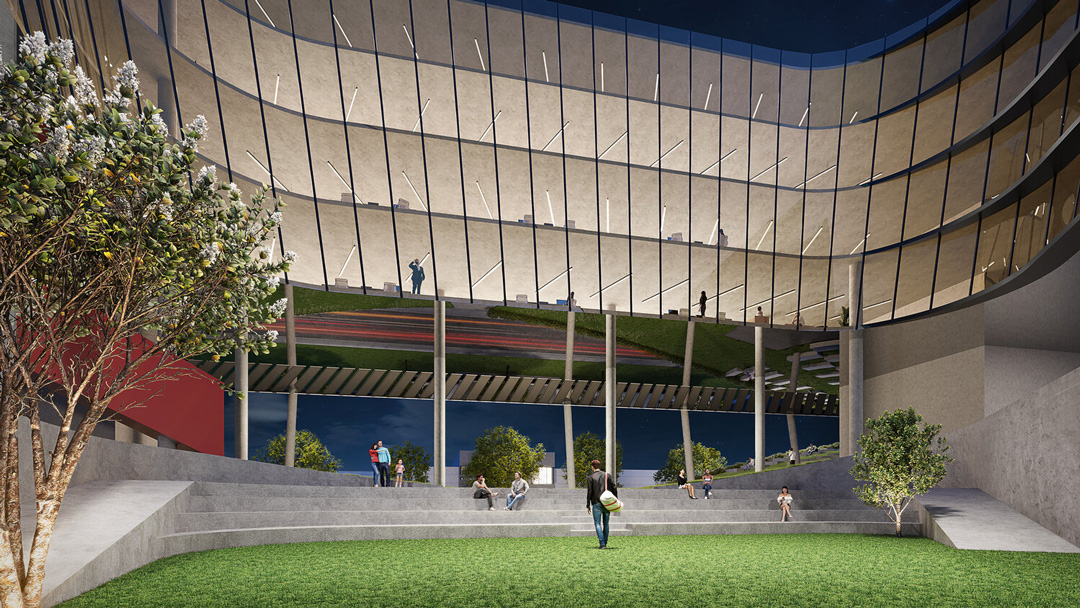
So, in many ways the workplace methodology is actually the reverse to where a lot of people thought it was going to be. There are some companies that are quite happy having 100% of their staff working from home, and the office is all about the workshops and those creative moments.
“Most of our staff have typically one day of working from home. We’ve got one lady who’s actually working from her home in Mexico at the moment. And it takes her exactly the same amount of time for her to get to work as someone who’s living 20 minutes down the road. There’s no difference, apart from she sleeps the first few hours of the day and has dinner at strange times compared to others in the office.
“It’s a bit like technology. You can do anything with it, but what’s the most appropriate use for it? And that’s what we’re going through now. When it is actually really advantageous for business and when is it not?”
While some businesses are now demanding that workers ‘return to the office’, this is by no means universal, and Briggs says the decentralised office is driving change in the geographic and demographic makeup of regions.
“Regional cities of Australia in general – Wollongong, Newcastle, Gold Coast, and Geelong, Frankston in Victoria, those cities are becoming not so much dormitory cities where we might sleep and spend the weekend, but places we’d actually work as much as in the main capital city of a region.
“And with more people living and working in those cities during daytime hours in the week, they are now becoming far richer in their population and far richer financially, with more people spending far more money locally than they did before.”

“I think that’s a really exciting outcome of COVID and the technologies that helped us be able to survive it. You’re going to have the regional towns and small cities actually start to have their own gravity and attraction,” said.
Briggs says that local focus brings other feedback loops, such as bike use increasing dramatically and driving a trend for vastly improved end-of-trip facilities in office buildings.
“So, the space that you put your bike, the showers, the change areas, the place for hanging clothes up, all that has gone from some corner of the basement to now almost being like a day spa in some buildings.
“And those facilities are a major selling point to tenants. So it’s not just a trend. It’s a critical component of an office building and an apartment building. It’s a critical component of the marketability of a building,” he says.
Briggs says this speaks to the central idea of the workspace actually merging with your home.
“That’s the fundamental shift. That blurring I think, then trickles down into the devices, your laptops, the way that you communicate – everything is blurred, but I think in many positive ways.”
Briggs talks about an apartment building project he’s working on at Plus Architecture, which has a small park around it as part of the development.
“We’re experimenting with how we actually get outdoor power points and wireless coverage in the park so that people can use their device out in that park with WIFI if they need to, and work from there. So, it’s not just blurring home and work, it’s blurring of space.”
So many people working from home during the day, combined with a boom in online shopping driven by COVID has caused other considerations in the design of residential and commercial large-scale buildings.
“You’ve got to consider what happens when 200 people all do that at once and you get all those parcels delivered to the front door of an office building or an apartment building. Where do the parcels go? All of a sudden, your mail room changes into a mini post office.
“And then, apparently there’s a spike in people breaking into people’s lockers to steal their parcels. So, the outcome of that is they now have full time concierges for these larger scale apartment buildings to welcome and guard the deliveries.
“We think it’s a small change: you download an app and you do some online shopping… but suddenly, it has all these significant knock-ons when everyone does it at once,” he says.

Dr Natalie Allen, Director and Urban Strategist, The Urban Advisory is a leading thinker on urbanism in New Zealand. A keynote speaker at Design Experience, she specialises in designing neighbourhoods that enhance wellbeing and is passionate about supporting clients to innovate when it comes to delivering quality, resilient, and people-centric developments.
Allen says that COVID has actually been a great catalyst for much more flexible, much more accepting work environments – “reflecting the fact that people have lives, families, and a whole lot of things going on. And work is actually part of that as opposed to it being completely separate from it”.
“Which I actually think is a positive thing, particularly as a young mom myself. It makes the juggle feel more normal and accepted,” she says.
Global trend forecasters have been predicting that the workplace will need to become more welcoming to retain staff, more like a lounge, and conversely, the home will be designed to cope with more business activities. Does Allen see this trend emerging here?
“Well, I think with a lot more flexibility, comes the desire to also work in slightly different ways. It means that often when you’re in the office, you are really prioritizing that time for human connection, and communication, really delving into projects, workshopping complex issues,” she says.
“But, if you’re not having much space in the office for sitting down quietly working on a project, you might do that at home now. You don’t necessarily need all that desk space, and that actually frees up space for different purposes,” she says.
Allen says that in her own office the space has been optimised to increase the amount of space for cafe style sitting, talking together, with plants and green spaces – to make it an enjoyable place to sit and talk and plan a project.
“But we’ve also increased our tech in terms of everybody having noise canceling headphones and so that if they do happen to be in the office for that extra Zoom meeting, et cetera, they do have that ability,” she says.

So, it’s an inversion of the old way of thinking?
“We were used to traveling a great deal before the pandemic, whereas now our clients are so accepting of online meetings. We still do large presentations or initial workshops together in person if possible, but a lot of that in-between, backwards and forwards, is now all done over Zoom. Often members of our team, including me, will schedule all the Zoom calls for one day and do them at home.
But what about corporates saying, “No, you’ve got to come back to the office”, will there be a pushback?
“I think different industries are different. I’ve heard from some clients that there’s a sense of people being able to ‘hide’. But I think that really highlights a bigger systemic issue in the way that those businesses operate as opposed to something that’s necessarily COVID related,” she says.
But can you actually have a business culture if people aren’t in the office?
“That’s why I think collaborative spaces are so important, but also, we’re seeing an increase – and maybe this is just in smaller teams – in actually doing activities outside the office, as well as part of the team building.
“I think there’s much more acceptance of some of that happening outside the office, but not necessarily in people’s homes.
“It’s not a Zoom replacement. If anything, I’d emphasize that it’s actually about complete flexibility and being a lot more creative. I think it really challenges senior leadership to be much more creative about how they bring their teams together.
Repopulating workplaces post-COVID means considering things like ventilation and spacing. Are those big issues going to continue to be prominent in workplace design?
“I’m in two minds about this. If you’d asked me six months ago, I might have had a different opinion in terms of what the new normal might look like. But I feel like I’ve noticed a shift recently with people being so hungry for actually being able to lean over and talk to somebody, that I think there will be a return to some of that human proximity that we haven’t seen for a long time.
“I think people will continue to be more cautious with health and having an emphasis on really taking your sick days, et cetera, but I’m not sure that it will necessarily affect the physical design of spaces,” Allen says.
“I guess for me, the urban scale is completely different from the built form scale. In offices I think there will be more of a return to normal, people wanting to get back together – but I think when it comes to cities, we’ll actually see quite a shift in the types of spaces that we are designing.
“And that’s where I think the legacy of COVID will probably be most felt. In a positive way and this will spill over into that neighborhood scale as well. It doesn’t have to just be the downtown areas. I think there is this desire to get back to businesses because there’s this real sense of having missed a whole lot of experiences.
“Just remember how pre-COVID, the experience economy was becoming such a significant part of how we derived joy from our urban environments, and that came crashing down very quickly.
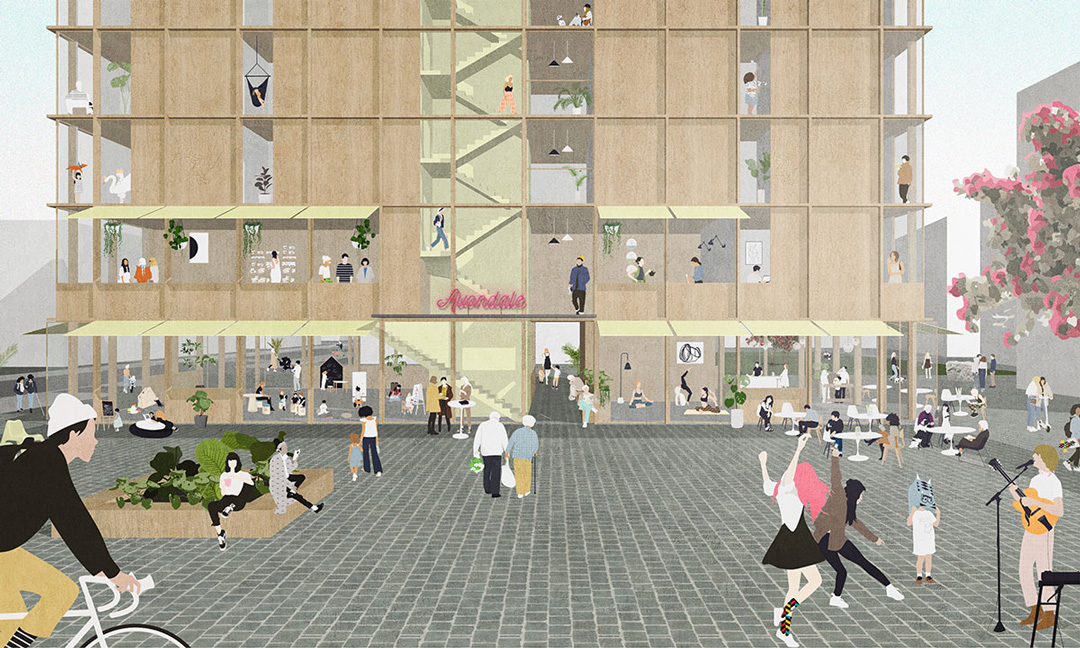
“I think that in that urban setting, a post-COVID response really needs to be a return to joy. And that means being able to get together with people that you care about and also watch other people have great experiences too, because we as humans are designed to thrive off other people’s joy, as well.
Allen believes it’s just a little too early to assess the changes in the New Zealand context.
“We are not quite post COVID yet. I think at the moment there’s quite a wait and see vibe, to be honest. I think a lot of people who might have wanted to move to a new space, haven’t. Quite a few people have downsized and are now like unsure if they will upsize or reconfigure. There’s a lot of that like office life rethink on pause at the moment, because in reality we’re not really quite post COVID…
“I feel like we’re maybe six months away from the gears starting to turn again, in terms of really knowing what those trends are. I mean, there’s lots of speculation on what they might be and there’s some fantastic ideas out there, but I just think that at the moment, there’s a lot of just apprehension. And as a result, a lot of putting the brakes on,” she says.
